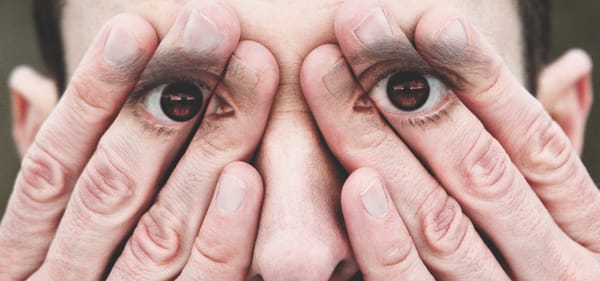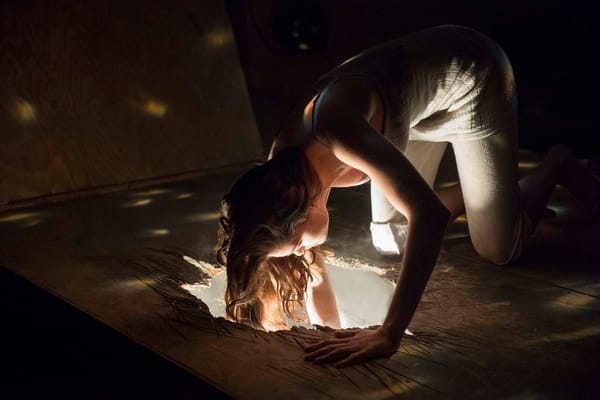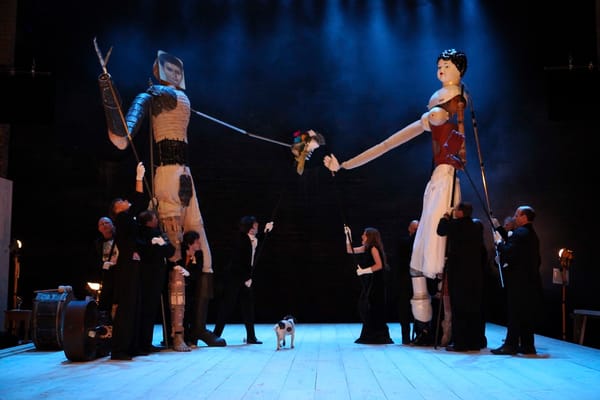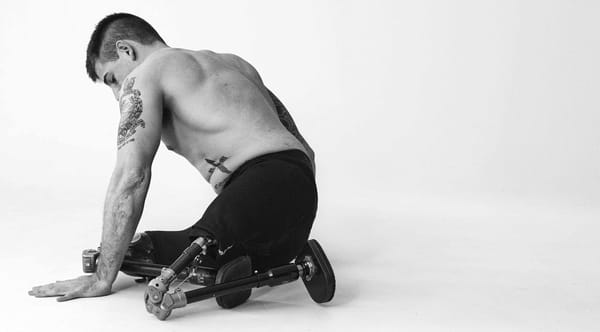A Lacklustre Show from the Father of Misogyny
The long-awaited Allen Jones Retrospective is analysed by Fred Fyles
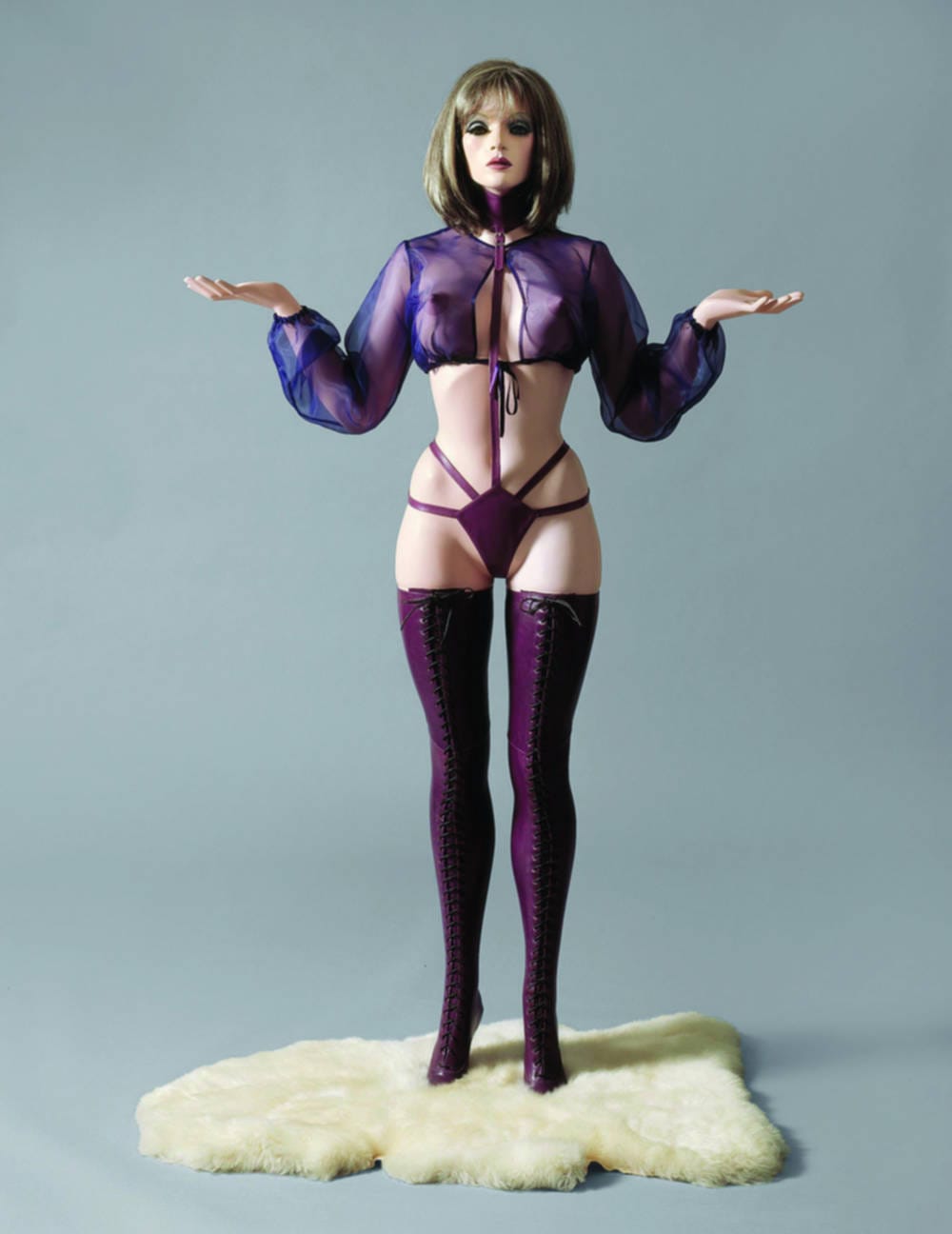
If we look up the work ‘Objectification’ in the dictionary, it will tell us that it describes “treating a living person as a thing, with no regard to their dignity”. It appears that Allen Jones has misinterpreted this meaning. At least, that’s how things appear when entering the retrospective of his work currently being held at the Royal Academy, where one is immediately faced with a semi-naked mannequin, clad in leather and staring passively down, supporting a large glass table-top on her back.
In this piece – Table, from 1969 – Jones has quite literally turned the female form into an object to be exploited, abused, and vilified; it is a theme that runs through an exhibition that, rather than championing Jones as the enfant-terrible of British art, only reveals the extent of the deep-rooted misogyny that has permeated his work for the last 40 years. The curator, Edith Devaney, has promised that “all the [opinions on Jones’ work] are discussed here”, and yet it is difficult to approach his art in any way that diminishes its outrageous sexism.
Table forms one third of a group of sculptures that caused controversy when exhibited in 1970; the other two, Hatstand and Chair, follow a similar theme of turning women into household objects. Since their debut they have, unsurprisingly, received a great deal of attention from feminist campaigners for their toxicity; the groundbreaking feminist magazine Spare Rib suggested that Jones was terrified of women, and just last week The Guardian ran a piece entitled “Is Allen Jones’ sculpture the most sexist art ever?”. Part of great art is its ability to shock, and Jones has expressed his surprise at the outrage his sculptures caused, saying that they weren’t intended to shock the general public, but instead “to shock Art”, and make a return to figurative sculpture. It seems a pity that Mr Jones had to exploit women’s bodies in order to make his nebulous ‘point’, and by saying that he was surprised by the outcry he reveals himself as either incredibly naive or completely deceptive.
Part of the problem with Jones’ body of work is that these three sculptures have dominated all conversation of his work; in this article thus far they have already taken up over 300 words. The rest of the exhibition, which presents all of Jones’ oeuvre, tends to fare a little better as far as offensive material goes, although his obsession with deconstructing the female form is present throughout; in his paintings from 1966-67, he obsessively draws disembodied women’s legs, while in other works women are separated into mere limbs and torsos, floating in a colourful void.
Some of Jones’ early work is very impressive, with his use of colour standing out as masterful; in one piece, The Sitter (1966) we have blue fading into verdant green, which then becomes crimson against egg-yolk yellow. His use of tones and hues are without equal, creating visually arresting paintings that still look fresh today, and reveal his links to American abstract expressionism. It is a pity then, that the subject matter remains so bland, with The Sitter depicting a tableaux in which women sprawl, legs akimbo, feet stiletto-ed, fawning in front of disinterested men. It is especially sad when compared to his earliest work, such as his ‘Buses’ series from the early 60’s, in which he dynamically explores the limits of both his use of colour, and the canvas as a physical medium. These works are fun, dynamic, and optimistic, which makes it even more of a pity that his other works are just rehashes of the same old tropes.
In many of the pictures we see women either completely naked, in a state of undress, or constricted in fetish-wear; a great number of the paintings feature a ‘man in control’. This may be a magician, sawing a glamorous woman in half. It may be a conductor, wielding a baton of power. In nearly all the cases the man is fully dressed, making the woman’s nakedness even more degrading – Robin Thicke eat your heart out, Allen Jones got here first.
All this being said, there are some stunning works in the gallery. Jones has spoken about his ‘three languages’ of work: Painting, Sculpture, and Steel. It is this last medium in which he comes closest to transcending the label of sexist that plagues his other work. Using sheets of brightly painted metal, Jones has created a series of couples dancing: over here a foxtrot, over there a waltz. These pieces exude confidence, levity, and – well – sexiness; it is as if the figures have come straight off the canvas, and are whirling around the exhibition space. With their complex spatial arrangement and sense of jollity, they are by far the best work in the retrospective – Naum Gabo with a Brighton-postcard sensibility.
Entering the final room extinguishes any joy obtained from the previous pieces; here, in what was supposed to be an explosive culmination of Jones’ work, there is assembled a ‘chorus-line’ of his static mannequin work. Dead, glassy eyes stare out at you from behind false lashes, giving the whole ensemble about as much appeal as a fishmongers. The guide says that the fine detailing and attention to detail “affords [these sculptures] status, as if they should be observed on a stage or a pedestal”. The only place I can imaging placing these sculptures is on the trash heap along with Page 3, Peter Stringfellow, and everything else that should have died a death sometime in the mid-70’s.
Ultimately, Allen Jones, rather than exalting women, robs them of their agency. Defenders of his work would say that Jones is simply making fun of male sexual desire, and yet the sheer tenacity with which he returns to the subject suggests that there is a deeper obsession with debasing women that runs straight to his core. Such subject matter can be used as a form of female empowerment: just look at the paintings of artist Ella Kruglyanskaya, who explores the female form with a joyous gaze - the women in her work aren’t powerless; they are strong, confident, and above all in control. Jones work doesn’t compare. Instead it sits alongside the work of other serial misogynists such as Mel Ramos, whose work claims to be subverting the male gaze, but instead just reinforces it.
Edith Devaney has spoken about how they decided not to show the three furniture sculptures together, since they wanted to take the focus away from the most well known pieces, and instead show work that isn’t usually seen. In that regard the retrospective is a success, giving viewer a chance to see the entire oeuvre of Allen Jones; the question is, why would they want to? Ultimately it reveals Jones to be an artist whose work shows no lack of skill, but a severe dearth of ideas. Devaney has lauded Jones’ decision to dress his sculptures in fetish-wear, since if he has dressed them in fashions of the time they would appear dated; but it is not the clothes that seem old-fashioned, just the archaic attitudes towards women that – like a poisonous mould – colonise every room of this exhibition.
Allen Jones is on at The Royal Academy, until 25th January. Tickets £11.50; concessions available



